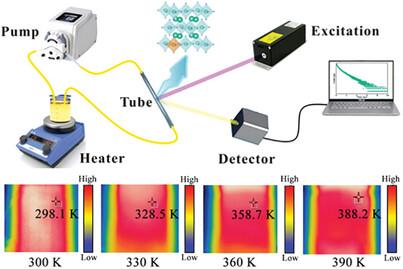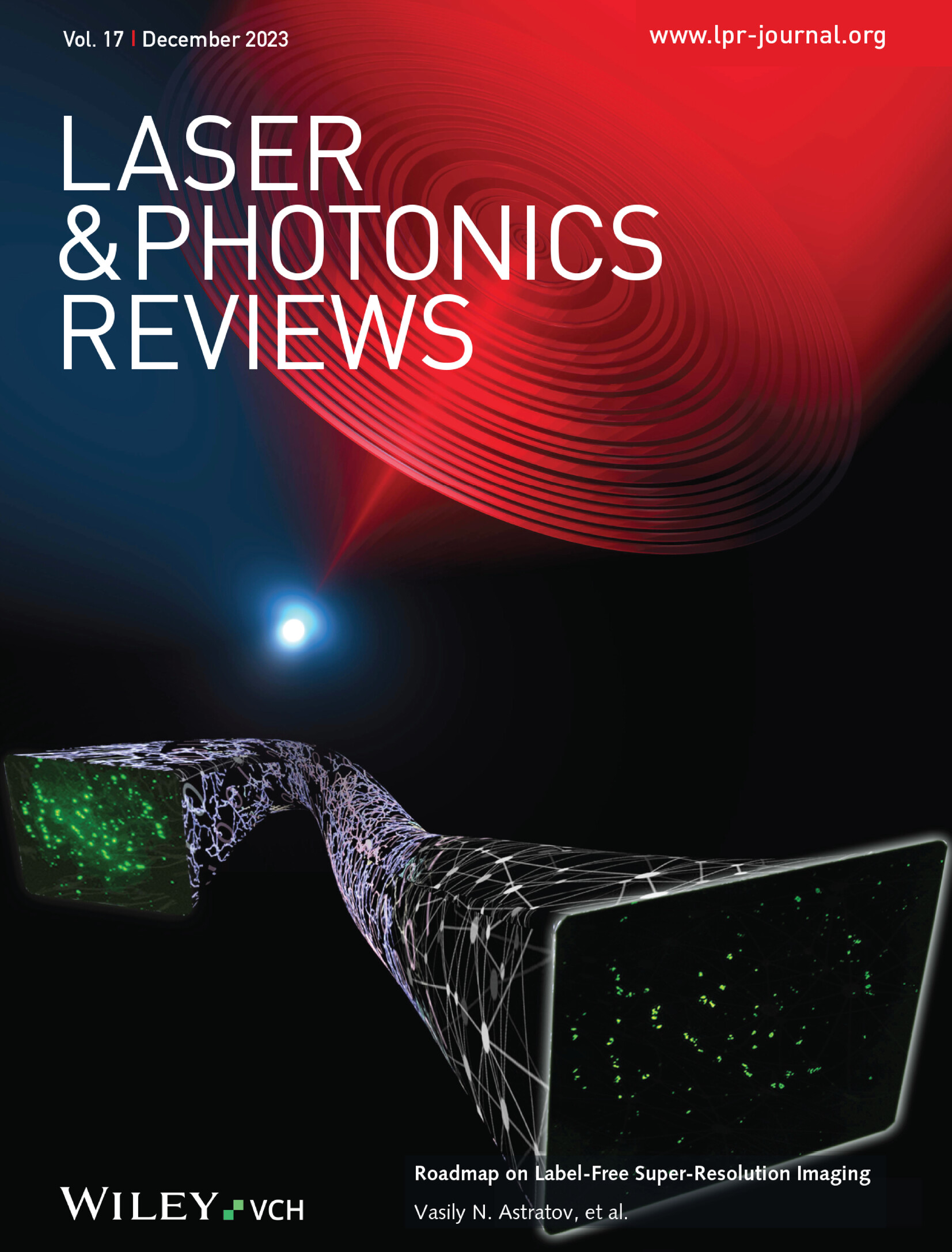Regulating A-Site Alloying of Te4+-Doped Hafnium-Halide Perovskite for Fluorescence Thermometry Achieving Breakthrough Sensitivity at High Temperatures
IF 9.8
1区 物理与天体物理
Q1 OPTICS
引用次数: 0
Abstract
Fluorescence thermometry has garnered significant attention for its noninvasive, remote, highly sensitive, and rapid temperature measurement capabilities. However, achieving superior sensitivity at high temperatures remains a persistent challenge. Herein, a series of Rb2−xCsxHfCl6: y%Te4+ perovskites are synthesized to investigate the impact exerted by A-site regulating regarding the luminescence efficiency and temperature-responsive capabilities. Te4+ doping significantly enhances luminescence intensity, with the broadband yellow light resulting from electron–phonon coupling within the soft lattice, driven by self-trapped exciton emission. Furthermore, A-site regulation demonstrates that increasing Cs⁺ content induces enhanced Jahn–Teller distortion, thereby boosting luminescence efficiency. However, the pure Rb sample exhibits the lowest thermal activation energy, as the temperature rises, increased phonon-exciton coupling and the defect activity accelerate the nonradiative recombination, drastically decreasing fluorescence lifetime by two orders of magnitude from 300 to 390 K. Utilizing this exceptional thermal sensitivity, a lifetime-based fluorescence thermometer is developed, attaining a breakthrough relative sensitivity reaching 20.69% K−1 at 390 K, with high repeatability across multiple heating and cooling cycles. Additionally, a high-temperature warning system for lubricating oil pipelines is designed, demonstrating robust monitoring capabilities. This work offers a new perspective on developing highly sensitive thermometers that utilize halide perovskites for high-temperature applications.

调节掺杂 Te4+ 的铪-卤化物过氧化物的 A-位合金化,用于荧光测温,在高温下实现突破性灵敏度
荧光测温仪以其无创、远程、高灵敏度和快速测温功能而备受关注。然而,如何在高温下实现卓越的灵敏度仍然是一个长期的挑战。本文合成了一系列 Rb2-xCsxHfCl6: y%Te4+ 包晶,以研究 A 位调节对发光效率和温度响应能力的影响。掺杂 Te4+ 能显著提高发光强度,宽带黄光来自软晶格内的电子-声子耦合,由自俘获激子发射驱动。此外,A-site 调节表明,铯⁺含量的增加会诱导贾恩-泰勒畸变的增强,从而提高发光效率。然而,纯铷样品的热活化能最低,随着温度的升高,声子-激子耦合的增加和缺陷活性加速了非辐射重组,使荧光寿命在 300 至 390 K 之间急剧下降了两个数量级。利用这种特殊的热灵敏度,我们开发了一种基于寿命的荧光温度计,在 390 K 时达到了突破性的相对灵敏度,达到 20.69% K-1,并且在多次加热和冷却循环中具有很高的重复性。此外,还设计了用于润滑油管道的高温预警系统,展示了强大的监测能力。这项研究为利用卤化物过氧化物开发用于高温应用的高灵敏度温度计提供了新的视角。
本文章由计算机程序翻译,如有差异,请以英文原文为准。
求助全文
约1分钟内获得全文
求助全文
来源期刊
CiteScore
14.20
自引率
5.50%
发文量
314
审稿时长
2 months
期刊介绍:
Laser & Photonics Reviews is a reputable journal that publishes high-quality Reviews, original Research Articles, and Perspectives in the field of photonics and optics. It covers both theoretical and experimental aspects, including recent groundbreaking research, specific advancements, and innovative applications.
As evidence of its impact and recognition, Laser & Photonics Reviews boasts a remarkable 2022 Impact Factor of 11.0, according to the Journal Citation Reports from Clarivate Analytics (2023). Moreover, it holds impressive rankings in the InCites Journal Citation Reports: in 2021, it was ranked 6th out of 101 in the field of Optics, 15th out of 161 in Applied Physics, and 12th out of 69 in Condensed Matter Physics.
The journal uses the ISSN numbers 1863-8880 for print and 1863-8899 for online publications.

 求助内容:
求助内容: 应助结果提醒方式:
应助结果提醒方式:


